Woolly butterfly bush (
Buddleja marrubiifolia) is a drought-tolerant plant that deserves more attention in the garden. What’s not to love about a medium-size shrub that has velvety gray-green leaves and a long bloom period, and can easily handle the intense desert heat and cold winter temperatures? As its common name suggests, butterflies find its flowers irresistible, and you’ll find yourself touching its velvet-textured leaves. From locations with full sun to those that receive hot, reflected heat, this Chihuahuan Desert native can take it all. Its compact growth habit means that it seldom needs pruning, making it a must-have for the drought-tolerant garden. Don’t confuse woolly butterfly bush with the exotic, sometimes invasive
Buddleja davidii.
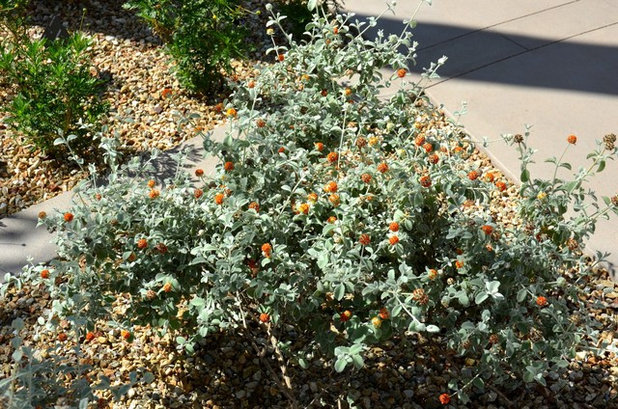
Noelle Johnson Landscape Consulting
Botanical name: Buddleja marrubiifolia (syn
Buddleia marrubiifolia)
Common names: Woolly butterfly bush
Origin: Native from southwestern Texas into the northern areas of Mexico, where it can be found growing along washes and canyons
Where it will grow: Hardy to 15 degrees Fahrenheit (USDA zone 8; find your zone)
Water requirement: Drought tolerant once established but does best when watered deeply twice a month in summer and once a month in winter
Light requirement: Full sun, including areas with reflected sun
Mature size: Up to 5 feet tall and wide
Benefits and tolerances: Drought tolerant; attracts butterflies
Seasonal interest: Flowers spring through summer; evergreen foliage
When to plant: Fall or spring from seed or transplants
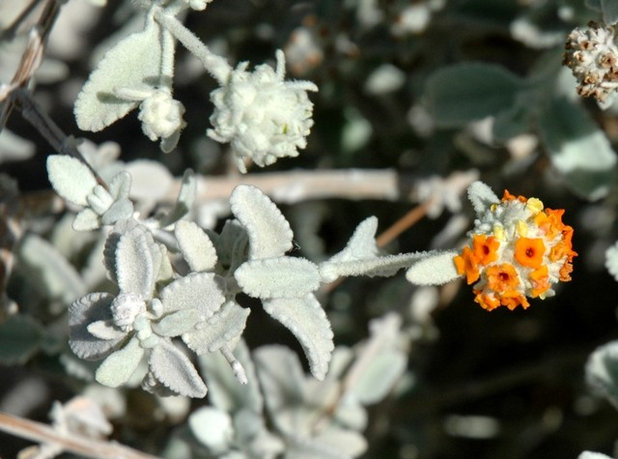
Noelle Johnson Landscape Consulting
Distinguishing traits. Woolly butterfly bush’s velvety gray leaves and marble-size orange flowers are its two most notable features. The inch-long leaves are covered with dense, fuzzy hairs, which help give it a silvery appearance and make it soft to the touch. Even when the plant is not in flower, the evergreen foliage adds great color contrast in the landscape alongside plants with darker-colored leaves.
Compact branching makes woolly butterfly bush a great choice for screening, and its moderate growth rate means that it won’t need much pruning.
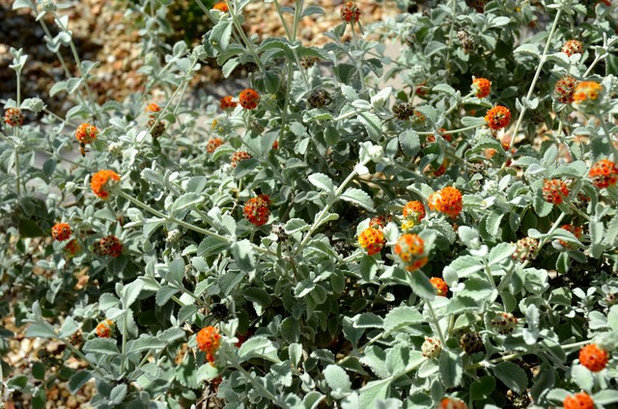
Noelle Johnson Landscape Consulting
Spring through summer, small orange flowers resembling gumballs occur along the length of the stems. Butterflies find the flowers and their nectar irresistible.
Flowering appears on new growth, which means that any pruning should be done in late winter or early spring.
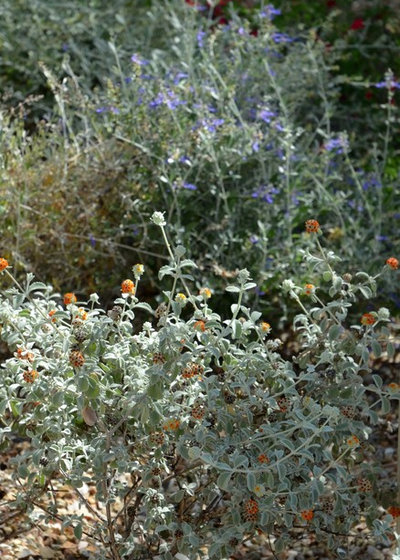
Noelle Johnson Landscape Consulting
How to use it. With its ability to survive in full sun on minimal water, woolly butterfly bush is a natural addition to water-wise gardens.
- Plant it alongside desert natives, such as damianita (Chrysactinia mexicana) or desert ruellia (Ruellia peninsularis), where its gray-green foliage will provide beautiful color contrast against their darker green leaves all year long.
- Use it as a foundation planting against buildings in areas that receive hot, reflected sun or plant it as an informal hedge.
- Create a layered planting with Texas sage (Leucophyllum frutescens) shrubs in the back, woolly butterfly bush in the center and blackfoot daisy (Melampodium leucanthum) in front, making the most of the color contrast of foliage and flowers.
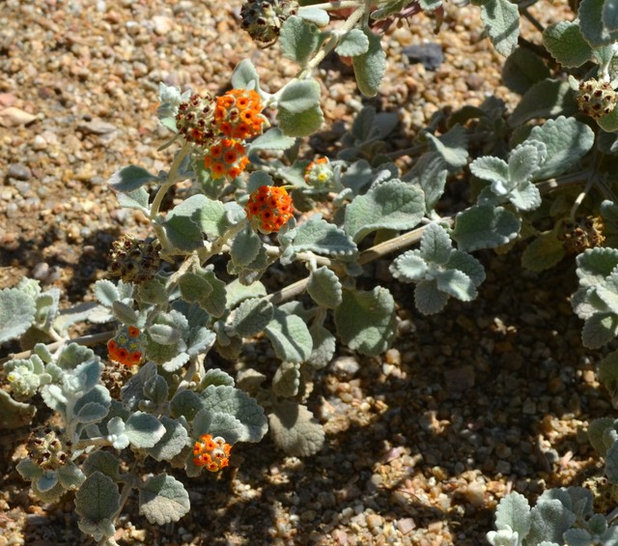
Noelle Johnson Landscape Consulting
Planting notes. Plant it in a location that receives full sun and has well-drained soil; avoid areas with heavy clay soil. Woolly butterfly bush isn’t fussy and needs no supplemental fertilizer.
While it needs relatively little pruning, any pruning should be done in late winter or early spring, since flowering occurs on new growth.





